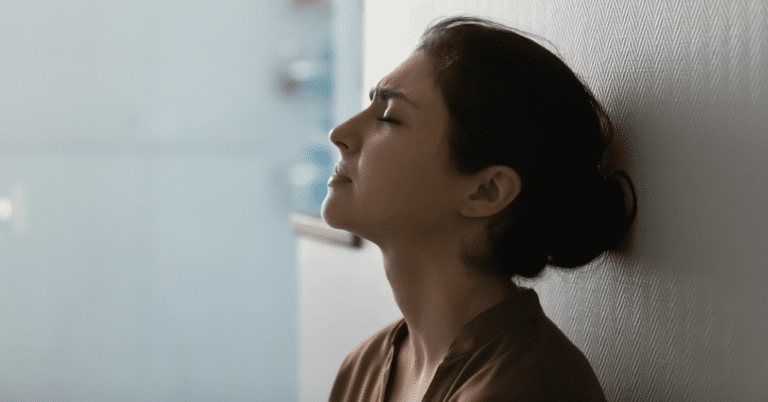Have you heard of prurigo nodularis (PN)? It’s an inflammatory skin disease with extreme itching. You may not be familiar with it because it only affects about 72 people out of every 100,000.¹ It’s important to note, however, that more Black people are affected by PN than any other racial/ethnic group. Studies have shown that Black people are approximately 3 to 4 times more likely to have PN than white people.²
If you’re diagnosed with this disease, it can have a significant impact on the quality of your life. In case you or someone you know experiences symptoms of PN, we want you to be aware. In this article, we will explore more about symptoms of PN, other parts of the body that can be affected, and things you can do to improve treatment.
What is Prurigo Nodularis (PN)?
PN is an uncommon chronic inflammatory skin disease that is characterized by extreme itching and bumps on the skin with an unknown cause. These bumps or nodules are typically seen on the arms and legs and the torso (chest, abdomen, pelvis, and back).3,4

Prurigo nodularis bumps (nodules) that have opened and bled after being scratched
Image created by American Academy of Dermatology Association
During the course of this disease, the extreme itching along with an uncontrollable urge to scratch starts first. A few weeks afterward, nodules appear on the area of your skin where you’ve been scratching. The nodules themselves are also extremely itchy. When you scratch them, they can open and bleed and lead to more bumps. Scratching can also cause more lesions to come. Older nodules are darker and follow a symmetrical distribution.5
The frequent intense itching seen in PN can affect the quality of your life. Some people with PN may experience4:
- Trouble sleeping
- Missed days from work (or school)
- Feelings of shame, sadness, or helplessness
- Limited social activities
- The need to retire early
 Prurigo nodularis bumps (nodules) of different sizes and shapes
Prurigo nodularis bumps (nodules) of different sizes and shapes
Image created by American Academy of Dermatology Association
Causes of Prurigo Nodularis
The exact cause of PN isn’t fully understood. It’s possible that the itching is caused by severe inflammation inside the body and thickened nerves from scratching.6 Many times people who develop PN already have another skin condition (like dermatitis, scabies, or very dry skin) that is extremely itchy. It is possible for you to have PN without another itchy skin condition, but this is less common.
It usually takes about 6 weeks of constant scratching and picking at the site of extreme itching for PN nodules to appear.6

Multiple small firm nodules on the leg of a person with prurigo nodularis
Image from Up To Date
There are other people who have intensely itchy skin that never develop PN.
Researchers are studying PN to determine the root cause of the itching in this condition.
Because this condition is rare and the presentation of the nodules is unique, your doctor may not initially recognize that you have PN.
Risk Factors for Prurigo Nodularis
Although the exact cause of PN is unknown, there are some people who have an increased risk for PN. Risk factors include6:
- Being 50 years of age or older, specifically between ages 51 and 65
- Black ethnicity, especially if you are a Black person with dermatitis and frequent itching flares
- Living long term with conditions such as:
-
- Atopic or contact dermatitis
-
- Diabetes
-
- End stage renal disease
-
- Hepatitis C
-
- Anxiety or depression
PN has also been associated with other conditions including fibromyalgia, interstitial cystitis/bladder pain syndrome, and irritable bowel syndrome.7 If you have PN, it is important that you are diagnosed and start receiving treatment quickly. If you have itchy bumps that do not go away after two weeks, you should see a dermatologist.
How is Prurigo Nodularis Diagnosed?
If you have PN, you’ll need to see a dermatologist. If you go to your primary care physician, you may be referred to a dermatologist to take a closer look at your skin.
Diagnosis of PN is typically based on a history of chronic severely itchy and damaged nodules on the skin.7 Usually your dermatologist can diagnose PN by looking at the itchy bumps on your skin. It may require a biopsy (a procedure where some skin is scraped off to be examined further) if you have more than one skin condition or there is a poor response to initial medications.8,9
Your doctor may also order blood tests and do a detailed exam of multiple organ systems. PN may be the first noticeable sign of lymphoma, untreated HIV, or another disease so your doctor will want to check more than your skin.8
To learn about how PN is treated and self-care tips, read our next article for more.
References
- National Organization for Rare Disorders (2023) Prurigo Nodularis https://rarediseases.org/rare-diseases/prurigo-nodularis/
- Nishadh Sutaria, BS et al. Understanding racial disparities in prurigo nodularis. https://doi.org/10.1016/j.jaad.2022.05.014
- Belzberg Micah et al. (2021) Prurigo Nodularis is Characterized by systemic and Cutaneous Th22 Immune Polarization https://www.ncbi.nlm.nih.gov/pmc/articles/PMC8384659/
- American Academy of Dermatology Association (2024) Prurigo Nodularis: Signs and Symptoms https://www.aad.org/public/diseases/a-z/prurigo-nodularis-symptoms
- American Academy of Dermatology Association (2024) Prurigo Nodularis: Overview https://www.aad.org/public/diseases/a-z/prurigo-nodularis-overview
- American Academy of Dermatology Association (2024) Prurigo nodularis: Causes https://www.aad.org/public/diseases/a-z/prurigo-nodularis-causes
- Watsky Kalman, MD (2024) Prurigo nodularis https://www.uptodate.com/contents/prurigo-nodularis
- American Academy of Dermatology Association (2024) Prurigo Nodularis: Diagnosis and Treatment https://www.aad.org/public/diseases/a-z/prurigo-nodularis-treatment
- The Mayo Clinic (2024) Skin biopsy https://www.mayoclinic.org/tests-procedures/skin-biopsy/about/pac-20384634
You Might Also Like:

Don’t Ignore These 5 Skin Changes
Ignoring certain skin changes can mean missing important signals your body is sending. Let’s talk about five skin changes you shouldn’t brush off, and what they might be telling you.

5 Things That Worsen Hidradenitis Suppurativa (HS) Symptoms
While there’s no cure for hidradenitis suppurativa (HS) yet, identifying and avoiding these triggers can help manage symptoms and improve quality of life. #2 may surprise you!


